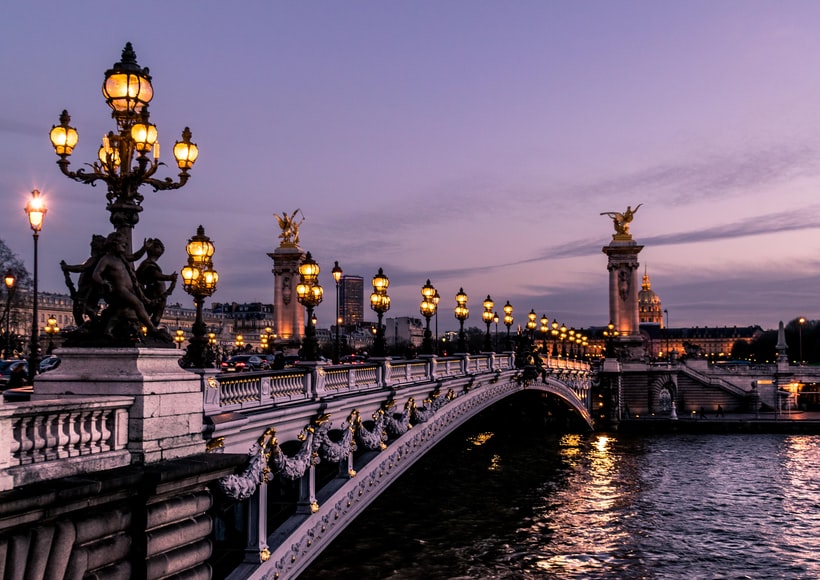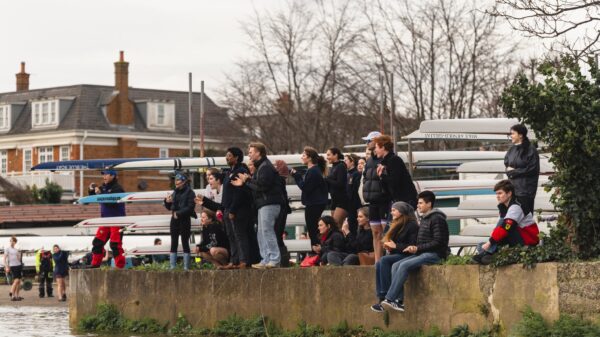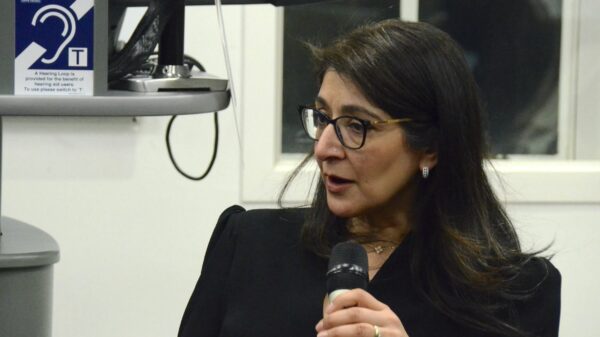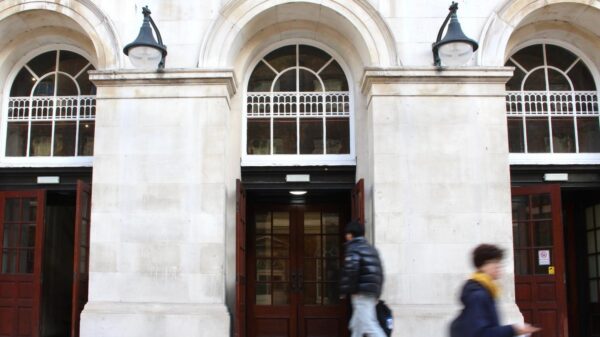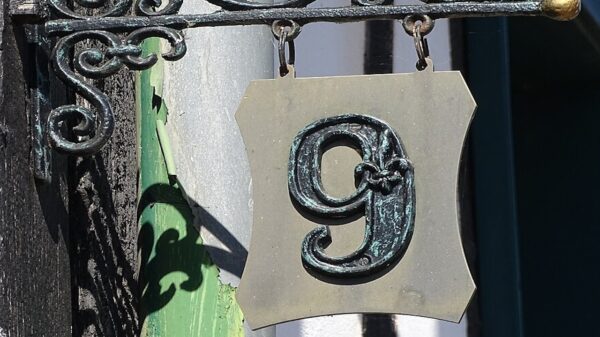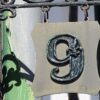Staff writer James Westmacott discusses Villanelle, the character from the TV series “Killing Eve”.
Villanelle waltzes gracefully through the charming Parisian streets, hands filled with luxury handbag and shopping brands, fluorescent pink trench coat on. She has an air of confidence and invincibility about her. The sound of the French language amongst passers-by, the trotting of her designer boots across the Parisian zebra crossing amidst European-sounding ambulance sirens, she bountifully drifts past the smoke-filled cafes where regulars talk of the day’s politics and the great existential questions. She reaches her flat in the 3rd arrondissement, with big, beautiful, blue French doors, opening up to the inner Parisian life of a bygone era, strutting up the mid-19th century staircase, into her apartment, overlooking the heartbeat of Paris in all its beauty – an apartment Eve later describes as chic as shit. Paris – perhaps the world’s most romanticised city – with its lust for luxury designer clothes, its amorous passion, and sophisticated grandeur, is often easy to glorify. And perhaps that’s what Killing Eve does best.
From Tuscany to Vienna, Andalusia to London, the show is full of luxury locations, with its extremely aesthetically pleasing nature a huge factor behind the show’s great success. In no character is this better embodied than in Villanelle – a psychopathic, murderous, but intelligent and stylish female assassin, with her wholeheartedly free-spirited and financially unrestricted essence taking her around the world, engaging in whichever pursuits she so pleases. The show’s cinematic and musical choices help embed a deep sense of warmth and intimacy, with cool French 80s pop and funk, combined with more modern melancholic tracks from the likes of Cigarettes After Sex and Unloved, somehow making Villanelle’s nihilistic savagery effortlessly cool.
And it’s this resplendent blend that provides us with such an intriguing and alluring character – one that we come to root for, despite her obvious inherent shortcomings. Her opulent style, ostentatious confidence, combined with her astounding multilingual aptness, captivates us and blissfully manoeuvres us into partaking in the overstated ballyhoo her character draws in. Her childlike nature expresses a wondrous sense of innocence, with her alarmingly short attention span elucidating her natural vulnerability, which we deem corrigible. Her femininity adds to her bloodthirsty nature a sense of calmness, often so utterly imperceptible in the characters of ghastly violent men. So much so, that the show’s creator Phoebe Waller-Bridge described Villanelle’s character as ‘instantly refreshing and oddly empowering’ when talking of Villanelle’s powerful but vicious rejection and resistance to the dominance of male power. Perhaps that’s what makes her the exquisitely portrayed anti-hero, right?
But perhaps what is often untold, is the highly unglamourous story of the character behind Villanelle. Luke Jennings, author of The Villanelle Novels, in which the show is based, remarks of his discovery of a Basque woman called Idoia López Riaño – the woman behind 23 murders in 1990s Spain, caught at the heart of Spanish regional politics’ fractious nature, described by Jennings as the perfect person to form the basis for Villanelle’s character as she was so ‘clearly a psychopath and completely without empathy’. Nicknamed La Tigresa for her sexual prowess, she once missed an opportunity to conduct a pre-meditated kill, as she was too busy admiring her own reflection in the mirror that stood before her. A fully-fledged narcissist, sickeningly imaginative with her killing methods, incomparably vain, and painstakingly stylish – it’s not hard to see where the character of Villanelle comes from, with the show’s writers and producers having depicted the portrayal of such an abhorrent being with immense precision.
López Riaño was part of armed Basque nationalist and separatist group ETA (Euskadi Ta Askatasuna) – a paramilitary group who engaged in violent bombings, assassinations, and kidnappings throughout the Basque country and Spain, in an attempt to initiate the region’s secession from the Kingdom of Spain. The group, which existed from 1968 to 2010, killed 829 people in total, including 340 civilians, and was classified as a terrorist group by Spain, France, the UK, the US, Canada and the EU. She was subsequently jailed in the mid-1990s for her crimes, convicted of killing 23 people. Originally, López Riaño was sentenced to 2000 years in prison, despite the maximum term in Spain at the time being only 30 years, indicating the extraordinary callousness of her crimes. Though, she was released from prison in 2017, having served a year in jail for each murder she committed. It would appear that to the Spanish legal system at the time, each human life brutally lost, directly equated to one year in prison. The deaths were just numbers to them.
But to what extent is Killing Eve’s romanticisation, even glorification of such heinous violence problematic? Murder after murder I find myself increasingly desensitised by the level of unscrupulous violence, essentially not batting an eyelid when yet another character is bludgeoned to death, with their body eviscerated in the process. Whilst this is by no means exclusive to Killing Eve, becoming so expeditiously accustomed to such merciless barbarism surely cannot be deemed a positive thing. Claims such as this are often met with cries of ‘oh well, it’s just a TV show, it’s not real’, highlighting how such criminal behaviour is often dismissed as fine. This level of cognitive dissonance isn’t entirely problematic, given that it is just a TV show and nobody really has died. But it does happen to real people. So where do the lines blur? The separation of TV show and reality is perhaps easy for some to make, but what about those who aren’t as fortunate to be able to experience violence only from afar? What about the victims of the ETA’s attacks, whose excruciatingly painful experiences of losing and mourning a loved one, have merely become weaponised for a spiffy, beauteous drama?
Perhaps this obscene level of violence can simply be considered an incredibly valuable form of artistic expression which greatly enhances our consumption of culture and heightens our intellectual experience of human life. Villanelle’s incongruous, exuberant charm, distances us greatly from the reality of who she is, and perhaps to feel a sense of agitated unease about her character was the overarching objective of the show after all. Is it therefore problematic, that the show merely takes such a killer, zhuzhs her up and suddenly her crimes are cool? Can anything, regardless of how brutal and inhumane it is, simply be dismissed as vital artistic expression? Where is the line drawn? At what point do writers actually have to take responsibility for what they are showing? That’s not to say that anybody who watches such barbarism will suddenly fancy becoming a coldblooded assassin. But surely its steady normalisation isn’t completely innocuous.
The debate surrounding the glorification of violence on TV and other forms of media is age-old, and will undoubtedly rumble on. Though, perhaps more pressingly, there are no easy answers. An impulsive clampdown of a despotic nature is certainly not required here. Perhaps instead, freedom of media must deliberately be combined with a greater sense of responsibility of those who write it and expose viewers to events that would in reality blemish their minds forever. The fourth season of Killing Eve premieres on British screens in late February, making it the confirmed final season of a heavily revered show. Which quirky new murder methods will our eyes be availed to this time?

